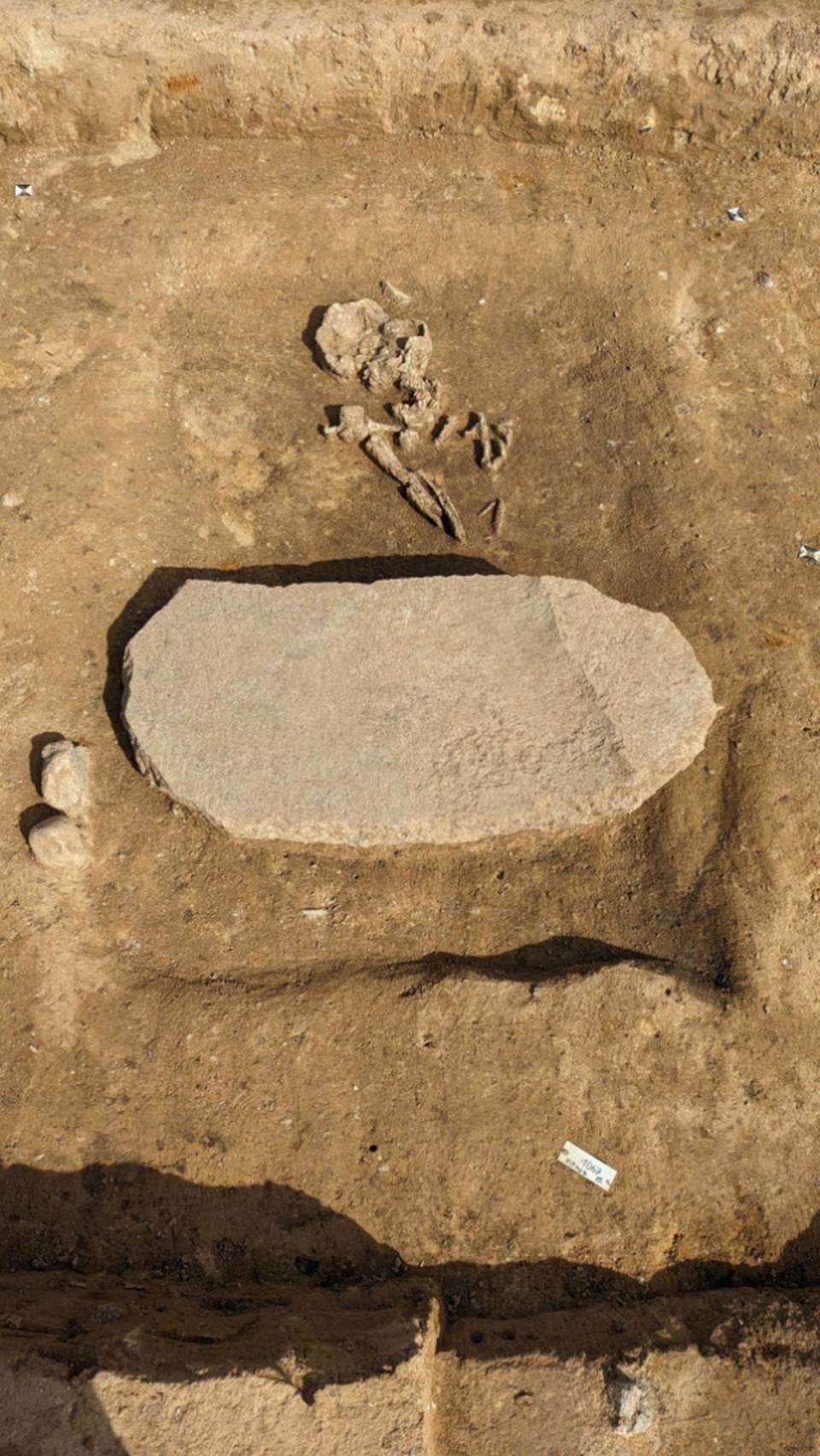‘Zombie’ grave — dating back 4,200 years — discovered in Germany, photos show
A supposed zombie grave, dating back thousands of years, was recently unearthed in Germany, shedding light on the superstitious practices of Bronze Age Europeans.
The burial site was found during an archaeological excavation near the village of Oppin, located about 100 miles southwest of Berlin, Anja Lochner-Rechta, a spokesperson for the State Office for Monument Preservation and Archeology, told McClatchy News.
The grave, a rectangular pit, was filled with the skeletal remains of a man, who is believed to have been between 40 and 60 years old at the time of his death.
His remains, which are about 4,200 years old, date back to the Bell Beaker Culture, which once inhabited a large portion of the continent.
The lower half of the man’s skeleton was covered by a large stone, meaning the site is a “revenant grave,” Lochner-Rechta said.

Uncover more archaeological finds
What are we learning about the past? Here are three of our most eye-catching archaeology stories from the past week.
→ Farmer loses plow part in Polish field — then finds historic artifact during search
→Divers remove ancient Roman cargo from shipwreck — and find unique carvings. See them
→ Metal detectorists find ancient portrait in Danish field. See the 'legend' it depicts
The term suggests the people who buried the man thought he might return from the dead as a “zombie,” according to MDR, a German public news station.
Lochner-Rechta said this kind of grave is unusual, noting that “there is little evidence of such burial customs for the Bell Beaker culture.”
The Bell Beaker people were a Bronze Age population in Europe distinguished by their grave goods, which include pottery, according to the Natural History Museum in the U.K.
They first appeared in central Europe before spreading westward, eventually reaching Britain some 4,400 years ago.
Eventually, they came to occupy vast swaths of western Europe and even parts of Africa, with their sites being found as far north as Norway and as far south as Morocco, according to research from Cambridge University.
Revenant graves throughout history
Evidence for revenant graves from various historical periods has been found throughout Europe.
For example, “fear of revenants is reported in Roman literature,” according to research from Cambridge University. “One way thought to prevent resurrection, attested elsewhere in the Empire, was dismemberment of the body.”
One such gravesite was uncovered in Italy in February, according to LiveScience. The 1,600-year-old Roman cemetery contained the remains of a child with a block in their jaw.
At the time, “there was tremendous fear of revenants and of mysterious forces [such as witches] who might harness the spirits of the dead for their own devices,” David Soren, an anthropology professor at the University of Arizona, told the outlet.
Additionally, 17th century Poland was reportedly a hot-bed of revenant superstition, according to the New York Times.
As a result, a number of precautionary measures were taken during burials. Some corpses were nailed down, lodged with bricks or even stripped of their hearts.
Google Translate was used to translate an article from MDR.
‘Unique’ 500-year-old chest — intended for battle — found on shipwreck in Sweden
Trove of artifacts — including cannonballs and coins — found at French island fort
11-year-old finds bones on UK beach with dad — solving ‘multimillion-year-old jigsaw’

